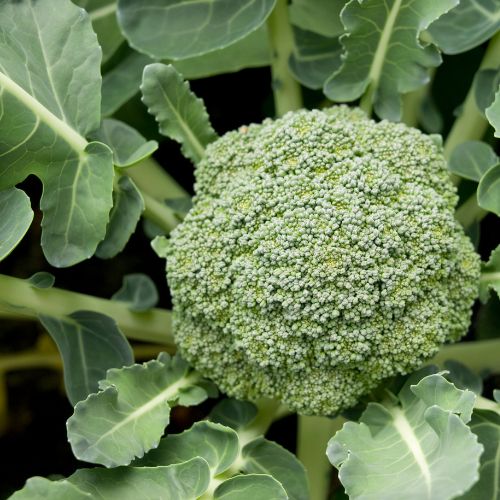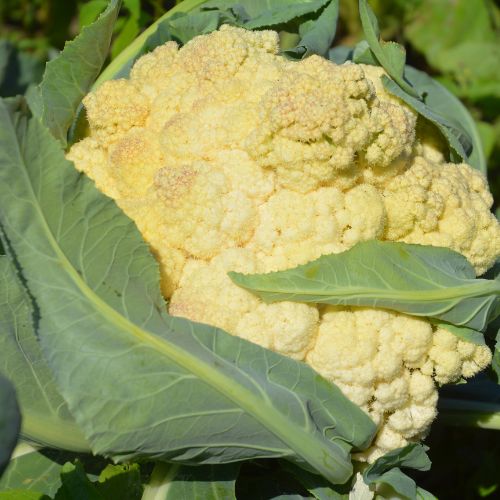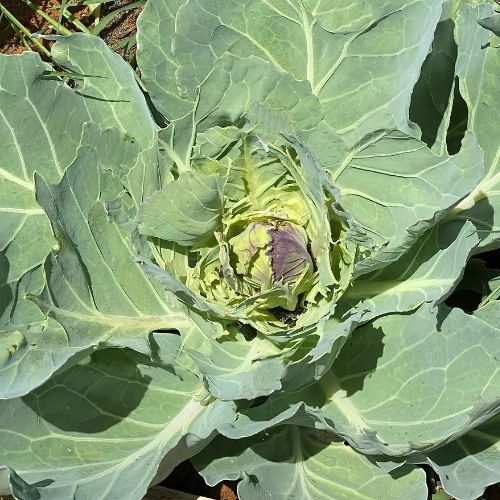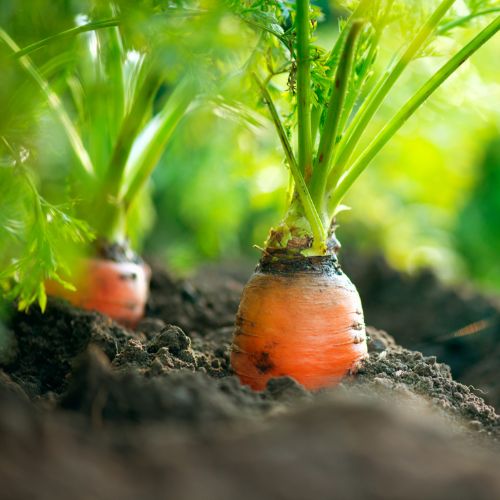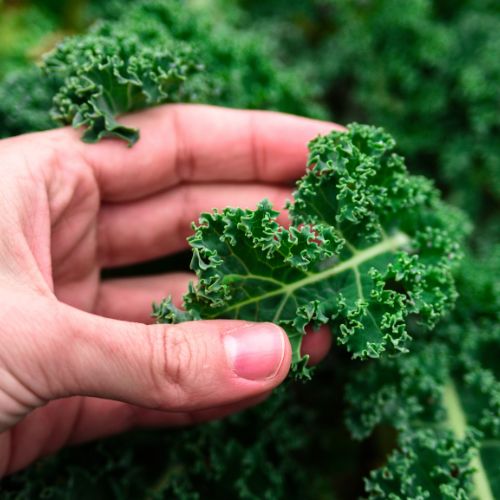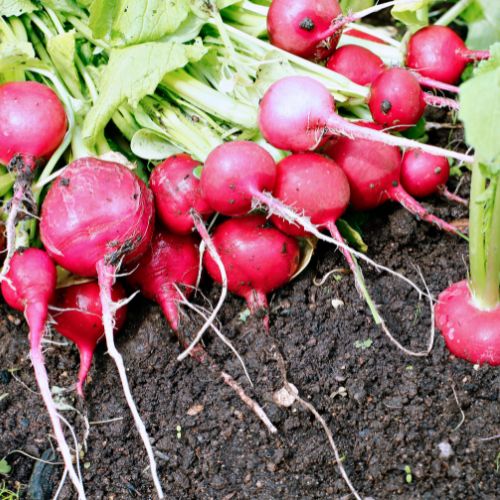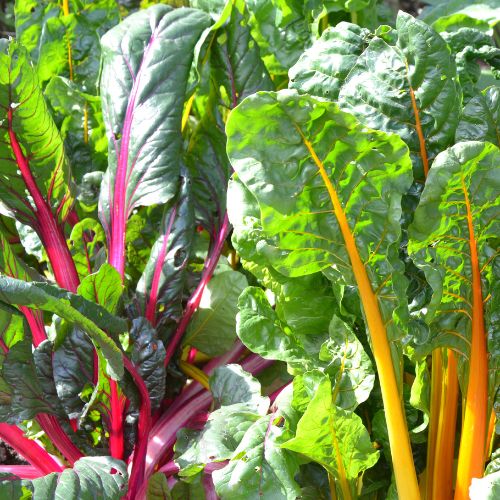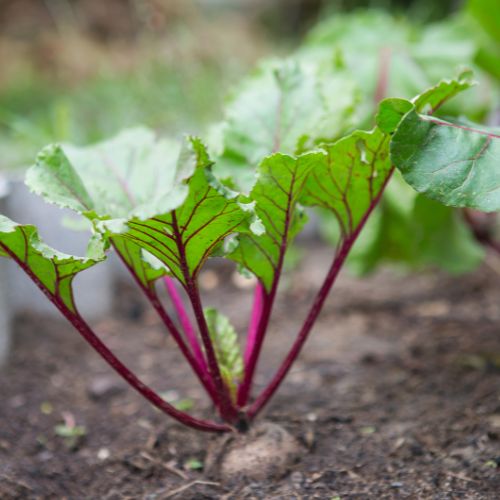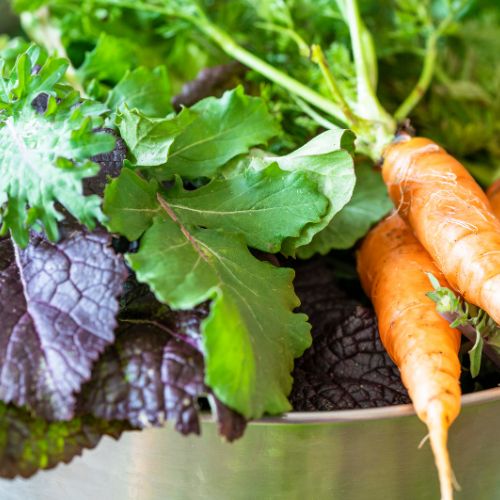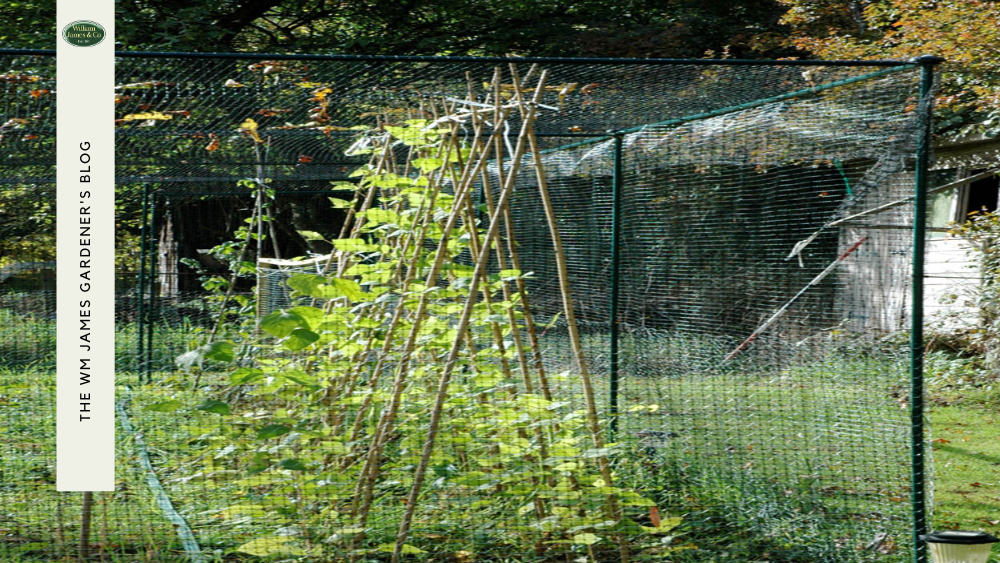We use cookies to make your experience better. To comply with the new e-Privacy directive, we need to ask for your consent to set the cookies. Learn more.
8 Winter Vegetables to Grow at Home & When to Plant Them
- Admin
- WM James Gardening Blog
- 12 Apr 2021
-
14views
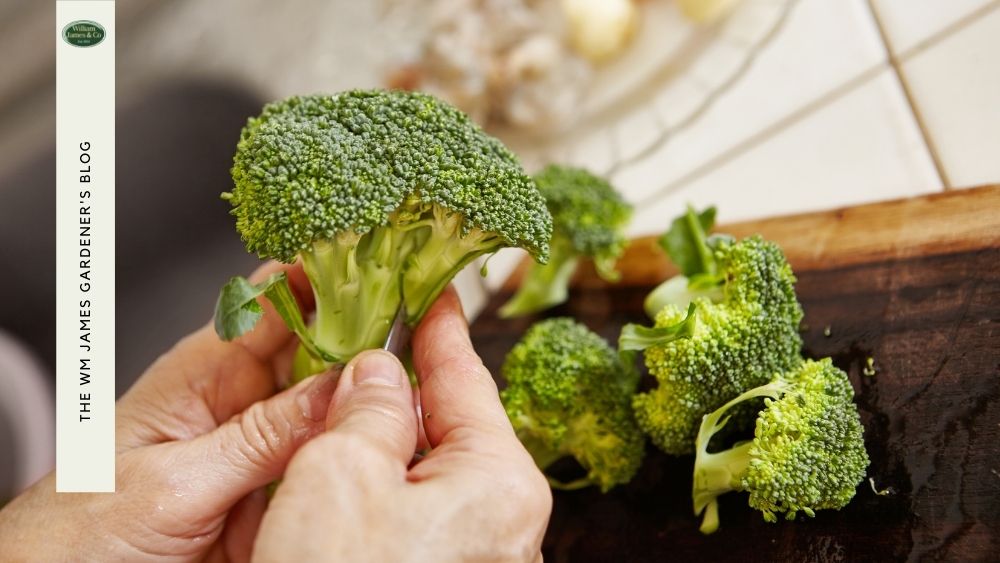
Don't miss out on fresh homegrown produce this winter! Master the art of winter gardening and learn when to plant winter vegetables with WM James.
Growing your own produce is becoming ever more popular, with more than two-fifths of households choosing home-grown fruit and veg over supermarket produce. And, while gardening in the summer is easy, growing vegetables in the winter requires extra care and attention, as well as knowing which specific vegetables can handle harsh conditions.
Our gardening experts have put together a list of the easiest winter vegetables to grow in your garden and top tips for getting the best winter harvests.
Here’s a quick list of vegetables you can plant in winter in the UK, as well as when to plant them.
| Vegetable | When to Plant |
|---|---|
| Broccoli | Plant in November. Transfer to garden at 10-15cm tall. |
| Cauliflower | Plant year-round. Start indoors during November, December, & January |
| Winter Cabbage | Sow seedlings indoors year-round. Transfer to garden when heads are big enough to withstand frosts |
| Carrots | Sow directly in the ground through November and December |
| Kale | Sow seeds directly into the ground through November and December |
| Radish | Sow directly in the ground in September and October. Sow seedlings indoors from November before transferring to the ground. |
| Chard | Sow seedlings indoors from October onwards. Transfer to the ground once the leaves are strong enough to withstand frost |
| Beetroot | Commonly planted between March and August. Can be left to overwinter to provide crops throughout winter. |
The Best Winter Vegetables You Can Grow At Home
As we approach the latter part of the year, we've cultivated a list of some of the hardy vegetables every gardener, both avid and novice, should consider growing in their garden this winter.
Broccoli
Broccoli is not a difficult vegetable to grow in your garden, and it's a great source of fibre and protein. Generally, broccoli seeds are sown in potting trays, in a greenhouse, or indoors.
Once the young plants are 10-15cm (4-6in) tall, they can be planted outside in fertile soil exposed to the sun or with light shade.
When to Plant Broccoli
November is the ideal time to plant broccoli and other vegetables to prepare for the seasons ahead. Planting broccoli plants in November and December means you'll have a crop of delicious vegetables in early spring.
When indoor-raised plants are moved into outdoor beds, it's important to cover them with horticultural fleece or another suitable covering to prevent damage by root flies. This will also help to protect winter veg from frosts.
Cauliflowers
Cauliflowers are an often underrated vegetable, but they are actually quite simple to grow. These vegetables are known as year-round vegetables because they cope well with a range of conditions. They prefer cool temperatures and fertile soil that is moisture-retentive, which makes them perfect for growing during the winter months.
When to Plant Cauliflowers
As their colloquial name suggests, these leafy crops can be planted at any point throughout the year. If you're planting them in November or later, you should sow the seeds inside or in a greenhouse until the heads are big and strong enough to survive outside in the cold weather. You can also use cloches or fleece to protect them if you're not sure.
Winter Cabbage
Growing winter cabbage takes very little planning to ensure that it thrives during the full cold of winter. If your cabbages are very small when you transplant them outside, or the weather is already particularly cold, cloches or plant fleece can protect your winter crops.
Our experts' top tip for protecting your winter cabbages from pests is to cover your planters with protection netting that allows air, light and water to filter through but is also light in weight so it can be laid directly over the crops.
When to Plant Winter Cabbage
Winter cabbages can be sown as seedlings indoors all year round. If you're transferring them to your vegetable patch during the colder winter months, make sure they're big enough to survive frosts and cold snaps.
Using garden fleece is an ideal way to protect them from cold snaps and temperature dips overnight.
Carrots
A recent poll revealed that carrots are the nation’s third most popular vegetable, the first being potatoes. Fortunately for gardeners, carrots are simple to grow and require little gardening experience or equipment.
When to Plant Carrots
If you want an early crop of carrots in the spring, you can sow carrot seeds directly in your vegetable patch through November and December. Make sure you cover the seeds with fleece or a cloche to protect them from frost.
Kale
Kale has earned itself a spot as one of the most sought-after superfoods available. It's often used in cholesterol-reducing salads or blended up in an antioxidant morning smoothie.
Despite its coveted status, this leafy vegetable is easy to grow and can be planted directly into the soil or in a planter placed on a balcony.
When to Plant Kale
Kale is the perfect vegetable to plant in the winter. When planting in November and December, you can sow kale seeds straight into your vegetable patch or raised beds. Kale is known for being tolerant of frost, if not frost-resistant, which makes it one of the best hardy vegetables to plant this winter.
You can still utilise garden fleece to protect your kale plants from particularly cold winters, but a cloche wouldn't be necessary. Additionally, you can either harvest it whole or pick off the side shoots to include in salads.
Radish
Radishes are another of those great, hardy vegetables that are perfect for growing in the winter. They make a delicious, healthy, and crunchy addition to winter salads, and they're bursting with antioxidants to help you stay as healthy as possible. Best of all, they can be grown from seed in just four weeks.
When to Plant Radish
Radishes are normally sown no later than September, but if there's a particularly mild fall and start of winter, you can get away with sowing them straight into the ground in October and September, too.
If you want to sow radishes later in the year for a winter harvest, you can sow them indoors or in a greenhouse until they're big enough to survive in the ground during hard frosts.
Chard
Chard, otherwise known as Swiss chard, is a wonderfully versatile vegetable that is both colourful and tasty. It can be cooked in a variety of ways, including as an addition to stews or simply sautéed with a little garlic and olive oil. Chard produces leafy crops that are perfect for a winter harvest.
When to Plant Chard
Chard is most commonly planted straight into the ground between March and September. However, if you want to plant them later in the year, you'll have to sow them in seed trays indoors or in a greenhouse until they can be transferred to the ground outside.
If the winter is particularly dry, regularly watering the soil can help the plant produce large leaves. If you're unable to regularly water the chard, it's fairly drought-resistant, so it will be fine.
Beetroot
Beetroot, or beet, is a great source of fibre and iron, making it an essential addition to any healthy diet. Beetroot can be eaten cooked or raw, both in savoury and sweet dishes. It's also perfect for growing during the winter months due to its hardiness.
When to Plant Beetroot
Beetroot is most commonly planted between March and August. With that said, many gardeners leave their beetroot to overwinter, which provides you with a steady supply of beetroot to harvest throughout the harsh winter months.
If you haven't sown your beetroot seeds yet, it's best to start them indoors and then transfer them to the garden to give them the best chance. Garden fleece can also provide some extra protection during hard frosts.
Our Experts' Top Tips for Winter Harvests
Now you know what to plant during the winter months, it's important to know how to make the most of your winter vegetables to ensure delicious winter harvests. Our experts have shared their top tips for growing vegetables during colder months.
Protect your soil
The cold can be harsh on the soil, making it difficult for your plants to grow. Consider using a layer of mulch or peat-free compost to protect your soil from freezing temperatures. This will also provide your plants with extra nutrients. You can also begin adding extra nutrients to your soil in late summer and early autumn to ensure it's as fertile as possible.
Choose the right plants
Not all plants can survive the winter. Ensure you're selecting plants that are cold-hardy and suited for your region's climate conditions. We've already covered the most hardy winter vegetables to help you get started!
Use cloches or plant fleece
Covering your plants can provide them with a warmer microclimate and protect them from frost and harsh winds. WM James stocks a range of plant fleece and cloches of various sizes to help protect your winter crop from the harshest frosts.
Take care of your tools
Winter can be harsh on your gardening tools. Make sure to clean and dry them properly after each use to prevent rust. Having a decent shed can help keep all your gardening tools dry through winter. check out the WM James sheds before the first cold snap.
Plan for pests
Slugs, snails, and other pests can be a problem during wet winter months. Use organic pest control methods such as copper slug tape to keep them at bay.
Harvest at the right time
Some vegetables can tolerate the cold and can be harvested throughout the winter. More tender plants prefer early winter harvesting, while other crops like to wait until late spring. Make sure you know when to harvest your crops to get the most out of your winter gardening.
Ensure proper drainage
Overwatering or heavy rains can waterlog your plants and cause rot. Make sure your garden has good drainage to prevent this. At WM James, we have an extensive range of gardening tools to help ensure proper drainage for your winter veg patch.
Provide plenty of light
The winter days can be short and dark. Position your plants so they get as much sunlight as possible during the day. Most vegetable gardens are located for summer growing, so you might need to prune some surrounding bushes to provide extra light.
Garden indoors
If the weather is too harsh, consider gardening indoors. Many vegetables can grow well in containers and can be grown indoors during winter. This is something that can only really be done with certain winter vegetables. Larger vegetables should be left outside but covered with plant fleece or cold frames. In extreme cases, you might need to write off your winter crops for the season.
Rounding Up Our Winter Harvest Vegetables
Now you have all the tips and tricks you need to tackle the winter growing season head-on. Growing your own winter vegetables means tasty, nutritious food at your fingertips all year round. With the right preparation and care, you can create a successful winter garden that will keep you warm and nourished during the colder months.
So don't let the cold weather stop you from enjoying fresh produce from your garden. Get planting now and reap the rewards of a bountiful winter harvest.
Remember to check out our range of gardening tools and supplies to get ready for winter planting before winter arrives!
FAQs
How can I protect my winter cabbages from pests?
You can cover your planters with protection netting that allows air, light, and water to filter through but is also light in weight, so it can be laid directly over the crops.
Is kale frost-resistant?
Yes, kale is known for being tolerant of frost, if not frost-resistant, making it one of the best hardy vegetables to plant in winter. You can still use garden fleece to protect it from particularly cold winters if you're worried about cold snaps.
How can I help winter vegetables produce large crops?
If the winter is particularly dry, regularly watering the soil can help the plant produce larger produce. This is particularly true for leafy crops, which, although they're drought-resistant, thrive with plenty of water.
Do I need to provide extra protection for my winter garden?
Yes, consider using a layer of mulch or peat-free compost to protect the soil from freezing temperatures. You can also use cloches and plant fleece to provide a warmer microclimate for your crops and protect them from frost and harsh winds.

